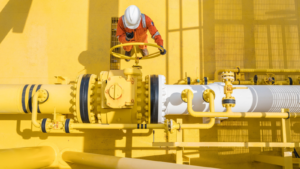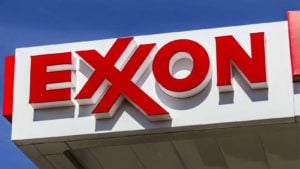Brent crude now trades at $77 a barrel, while West Texas Intermediate (WTI) goes for $73 a barrel. Both are down from recent highs of $84 a barrel and $80 a barrel, respectively. Fear of waning demand in China, the world’s largest oil importer, hit oil and gas stocks hard. The energy sector was the worst-performing market segment, down 2.6% on the news, and energy equipment and services stocks were the hardest hit.
Part of the problem is OPEC is no longer worried about U.S. oil production. The Biden administration imposed many new regulations on U.S. producers, ensuring that output wouldn’t likely grow. Despite the consolidation underway in the industry, particularly in the Permian Basin, output will be restrained.
Democrat senators demanded the Justice Dept. “use every tool” available to prosecute alleged price fixing in the oil industry. That was just cover for their own policies that have driven prices higher. The market, not the oil companies, sets oil and gas prices, particularly at the pump.
Although many bears smell market deterioration, they may be too hopeful. Adding back production will depend upon market conditions and will be regularly reviewed. A lot hinges on Saudi Arabia, but that means there are now many undervalued oil and gas stocks to choose from. The three companies below offer some of the best opportunities to buy.
Shell (SHEL)

Like many of its peers, Shell (NYSE:SHEL) has turned away from growth at all costs to one of pursuing the most profitable projects. More importantly, new CEO Wael Sawan is pursuing efforts to return value to shareholders. He seeks to cut between $2 billion and $3 billion in structural costs by the end of next year while limiting capital expenditures to $22 billion to $25 billion this year.
Shell’s primary focus is increasing its value relative to its peers. That includes buying back stock and paying a generous dividend to shareholders. The oil stock bought back $3.5 billion worth of shares in the fourth quarter and announced a new $3.5 billion buyback program that will finish by the end of the second quarter.
Shell is also committed to returning 30% to 40% of cash flow from operations as dividends. The payouts over the last four quarters slightly exceeded that target at 41%.
SHEL stocks trade at just eight times next year’s earnings and at a fraction of its sales. Shell also sports a low price-to-free cash flow (P/FCF) ratio of 7 times, making it an undervalued oil and gas stock to buy.
Antero Resources (AR)

Antero Resources (NYSE:AR) produces natural gas and natural gas liquids (NGLs) from unconventional shale formations in the Appalachian Basin of West Virginia and Ohio. Using horizontal drilling techniques and hydraulic fracture stimulation (fracking), Antero focuses on areas with relatively high liquid content.
Natural gas liquids production rose 8% in the first quarter and now accounts for 35% of total production. This puts Antero in the perfect position to capitalize on rising prices for ethane, propane, and butane. In the first quarter, it realized $9.32 per barrel (Bbl) of ethane, up from $9.12 Bbl in the fourth quarter. Antero realized a premium of 6 cents over the per-gallon Mont Belvieu price for propane and butane.
Antero Resources stock is up 51% in 2024, but there is more growth in store. Shares trade for 12 times next year’s earnings and 13 times FCF. Those are above its historical levels, but the natural gas stock is a good deal with the market for its products growing and prices rising.
Exxon Mobil (XOM)

Integrated oil and gas giant Exxon Mobil (NYSE:XOM) should not be dismissed because of the OPEC+ announcement. The phase-out of the production cuts is subject to monthly review. This could mean a U-turn very quickly if the member nations, especially Saudi Arabia, determine the market is still oversupplied.
Exxon remains focused on its bread and butter of oil and gas. It is not distracted by the rush into renewables many of its peers undertook (Exxon does have some renewables projects, though). It has limited capital expenditures to $20 billion to $25 billion through 2027, and its dividend is secure even if oil plummets to $40 per barrel. Moreover, it might even be sustainable down to $30, and that doesn’t include the low-cost assets Pioneer Natural Resources brings in from the recent acquisition.
Like Shell, Exxon is committed to only exploiting its most profitable assets, particularly those in Guyana. Exxon’s cash margins should significantly improve between new Permian acreage and Guyana projects.
On the date of publication, Rich Duprey held a LONG position in XOM stock. The opinions expressed in this article are those of the writer, subject to the InvestorPlace.com Publishing Guidelines.
Rich Duprey has written about stocks and investing for the past 20 years. His articles have appeared on Nasdaq.com, The Motley Fool, and Yahoo! Finance, and he has been referenced by U.S. and international publications, including MarketWatch, Financial Times, Forbes, Fast Company, USA Today, Milwaukee Journal Sentinel, Cheddar News, The Boston Globe, L’Express, and numerous other news outlets.
